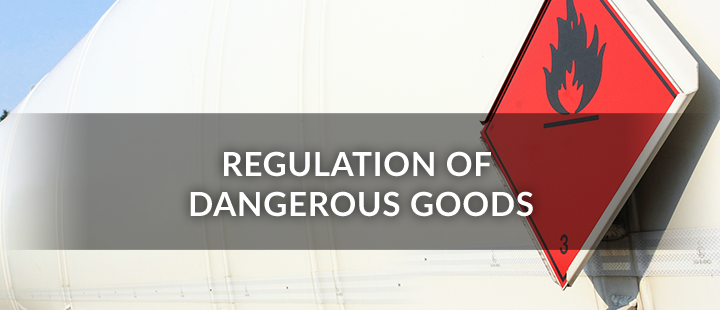


Regulation of Dangerous Goods
Main ContentAuthority
Our Role
As the regulatory authority of dangerous goods (“DG”) on land in Hong Kong, Fire Services Department ("FSD") regulates DG1 in accordance with the following ordinance and two pieces of subsidiary legislation which set out our powers, roles and details of the regulatory regime.
- the Dangerous Goods Ordinance, Cap. 295 (“DGO”);
- the Dangerous Goods (Application and Exemption) Regulation 2012, Cap. 295E; and
- the Dangerous Goods (Control) Regulation, Cap. 295G.
1 The below link will take you to a particular page of our website on “What are Dangerous Goods”.
https://es.hkfsd.gov.hk/dg/en/what_is_dg/textual_introduction/
Regulatory Objectives
Our regulatory objectives are:
- to enhance the safety of manufacture, conveyance, storage, and use of DG in Hong Kong; and
- to facilitate the operations of the trade and the daily use of DG by the public without compromising safety.
What We Regulate
We are the regulatory authority for all classes of DG on land, except gases under the Gas Safety Ordinance, Cap. 512, and Schedule 1 Dangerous Goods (“S1DG") which are regulated by the Civil Engineering and Development Department. As for the DG at sea and cargo terminals, the Marine Department is the regulatory authority.
We are the regulatory authority for all classes of DG on land, except the following:
- Gases under ‘Gas Safety Ordinance, Cap. 51’- regulated by the Electrical and Mechanical Services Department
- Schedule 1 DG – regulated by the Civil Engineering and Development Department
- DG at sea and cargo terminals – regulated by the Marine Department
Our regulatory work can be divided into the following five areas:
- the manufacture of Schedule 2 DG on land;
- the storage and use of Schedule 2 DG on land;
- the conveyance of Class 2 and Class 3 / 3A DG on land;
- the storage of Class 9A DG on land; and
- the packing, marking and labelling of Schedule 2 DG on land.
2 Gases under the Gas Safety Ordinance, Cap. 51 is controlled by the Electrical and Mechanical Services Department.
History and Development of the DG Regulatory System in Hong Kong
The DGO was first enacted in 1956 in Hong Kong, where at that time there was no single, globally harmonized system to govern the classification, transportation, packing, marking and labelling of DG at an international level.
In view of the need to harmonize and operationalize international and national standards, it was later that an expert committee from the United Nations Economic and Social Council (“UNESC”) developed an international system, based on which related international organizations could formulate their respective international codes on classification and transportation of DG suitable for different situations.
It was not long before our major trading partners started to refer to these codes and thereafter amended their respective regulatory systems on DG accordingly. Under this circumstance, the International Maritime Dangerous Goods (“IMDG”) Code was put together, with codes formulated on the basis of the control system developed by the UNESC which has since then been widely adopted around the world.
In Hong Kong, similar efforts, in phases, had been put into making legislative amendments to DGO and its subsidiary legislation, so that our DG classification system would reflect the prevalent international standards. Moreover, going forward, instead of following two distinct sets of requirements (locally and overseas), only one set of requirements is to be adhered to by the trade.
The table below provides an overview of the updates and refinements to the DGO and its subsidiary legislation over the years.
| 1956 | 2002 | 2012 | 2021 |
|
DG Ordinance (Cap. 295) |
DG (Amendment) Ordinance 2002 |
||
|
DG (Application & Exemption) Regulations (Cap. 295A) |
DG (Application & Exemption) Regulation 2012 (Cap. 295E) |
DG (Application & Exemption) 2012 (Amendment) Regulation 2021 |
|
|
DG (General) Regulations (Cap. 295B) |
DG (Control) Regulation (Cap. 295G) |
||
|
DG (Shipping) Regulations (Cap. 295C) |
DG (Shipping) Regulation 2012 (Cap. 295F) |
||
|
DG (Government Explosives Depots) Regulations (Cap. 295D) |
|||
| DG (Miscellaneous Amendments) Ordinance 2021 |
DG in Hong Kong are mainly imported and exported by sea. With effect from 31 March 2022, the local DG classification system and packing, marking and labelling requirements have been harmonized with the IMDG Code.
Since the IMDG Code is updated every two years, the Secretary for Security, under Section 5AA of the DGO, is empowered to amend the Schedules to regulations of the Ordinance so as to streamline the process for regular updating of the technical details of the subsidiary legislation (such as the list and exempt quantity of DG). In this way, the regulatory system will be kept abreast of the pulse of technological progress and continues to address the needs of the people in Hong Kong.